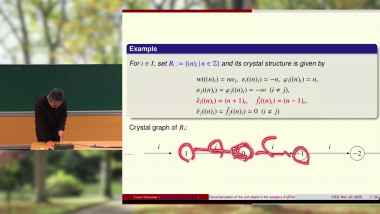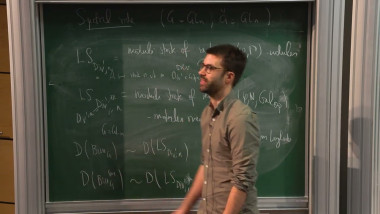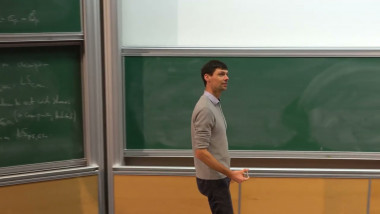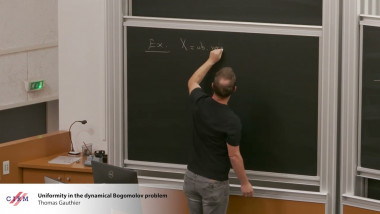Apparaît dans la collection : Jean-Morlet Chair 2019 - Research School: Thermodynamic Formalism: Modern Techniques in Smooth Ergodic Theory / Chaire Jean-Morlet 2019 - Ecole : Formalisme thermodynamique : techniques modernes en théorie ergodique
$Let (X,T)$ be a dynamical system preserving a probability measure $\mu $. A concentration inequality quantifies how small is the probability for $F(x,Tx,\ldots,T^{n-1}x)$ to deviate from $\int F(x,Tx,\ldots,T^{n-1}x) \mathrm{d}\mu(x)$ by an given amount $u$, where $F:X^n\to\mathbb{R}$ is supposed to be separately Lipschitz. The bound on that probability involves a constant $C$ depending only on the dynamical system (thus independent of $n$), and $\sum_{i=0}^{n-1} \mathrm{Lip}_i(F)^2$. In the best situation, the bound is $\exp(-C u^2/\sum_{i=0}^{n-1} \mathrm{Lip}_i(F)^2)$.
After explaining how to get such a bound for independent random variables, I will show how to prove it for a Gibbs measure on a shift of finite type with a Lipschitz potential, and present examples of functions $F$ to which one can apply the inequality. Finally, I will survey some results obtained for nonuniformly hyperbolic systems modeled by Young towers.














![[1243] Degrés dynamiques](/media/cache/video_light/uploads/video/SeminaireBourbaki.jpg)

